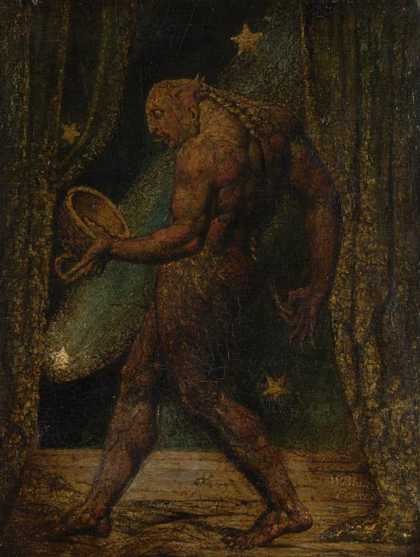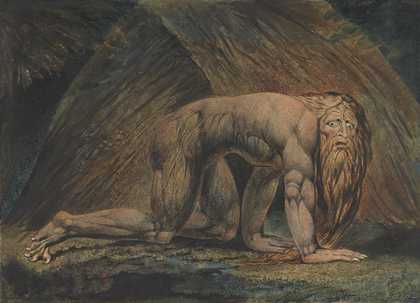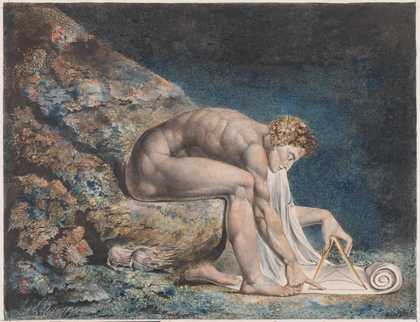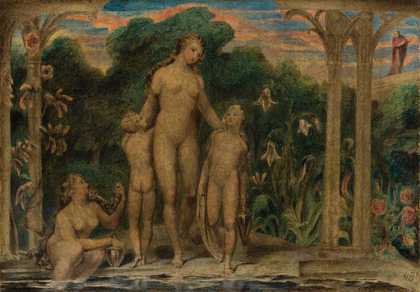
William Blake
The Ghost of a Flea (c.1819–20)
Tate
Mr Martin, my English literature schoolteacher, was a very important person in my life. He was an intense man, with strong convictions and an honest and open relationship with students. He was also a man who seemed to know things and to have lost things. I believed him, and when I was twelve we became close friends. My first memory of William Blake was reading his poem The Tiger in class with Mr Martin a couple of years later. I was quite underwhelmed (I wanted to skip immediately to T.S. Eliot and Ezra Pound), and asked him why this was supposed to be a good poem, as it seemed to be so simple and childlike. Mr Martin then spoke to me about what made the poem a poem, and I wasn’t sure if I found his arguments convincing at the time.
When I was a freshman in college, I came across William Blake’s illustrations of Dante and his collected poems in the university library and was immediately captured. As a prisoner of William Blake, the name itself came to represent an understanding of the world that I took as real and held with reverence. William Blake (and some few others) was, therefore, able to make art that, to my eyes then, was not dictated by the expectations of context, period, style, or an audience.
The Ghost of a Flea was maybe not my absolute favourite (the various infernal torments, the etchings accompanying some of his poems, were perhaps more impressive), but it was one of the more puzzling. Every time I came across it as I flipped a page, I would linger. On one level, I think I took it literally: he had met the ghost of a flea and that was what it looked like to him. With this literalism, for a short period of time, the world made sense. I could read its code in a bus number, a street sign, the way a woman carrying her shopping walked down the street. This was a benevolent paranoia, though, as the world here was not the sum total of the secret intentions of self-serving hungry souls, but rather an affirmation of everyone and everything. From that perspective a flea, of course, has a ghost, and if he does, then William Blake can possibly one afternoon meet that ghost and render it using his magnificent command of form. It was the very form of the painting (as mediated through reproductions in various books at different sizes, resolutions and colour gradings), however, that made this literalism possible. And that is something I could never forget.



